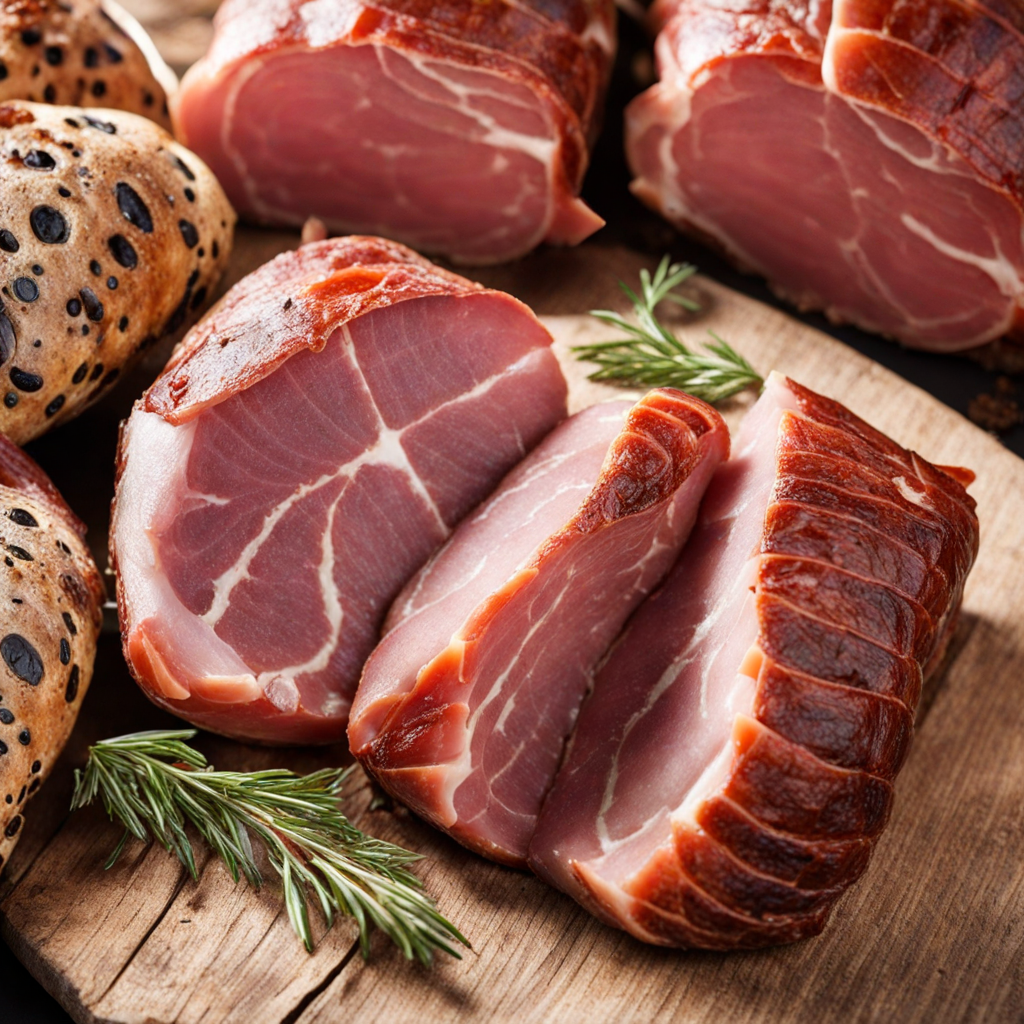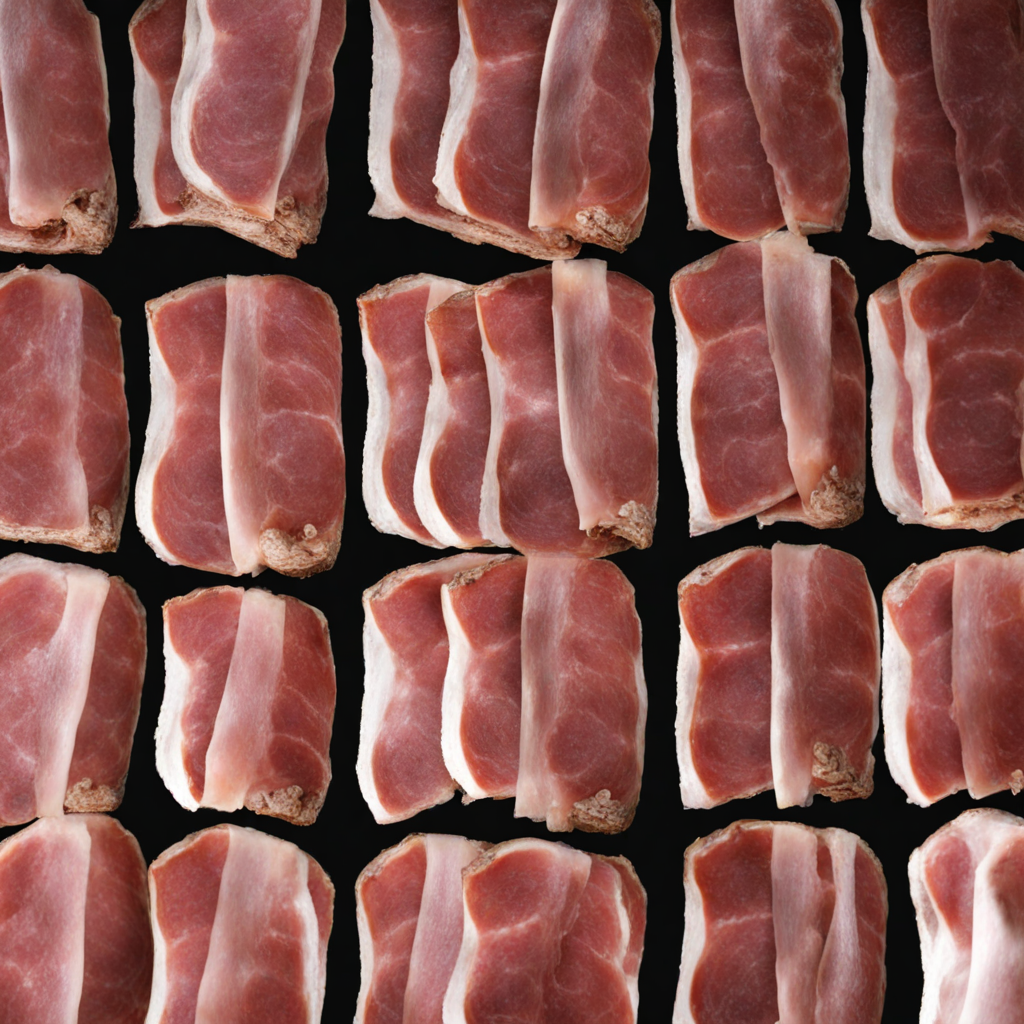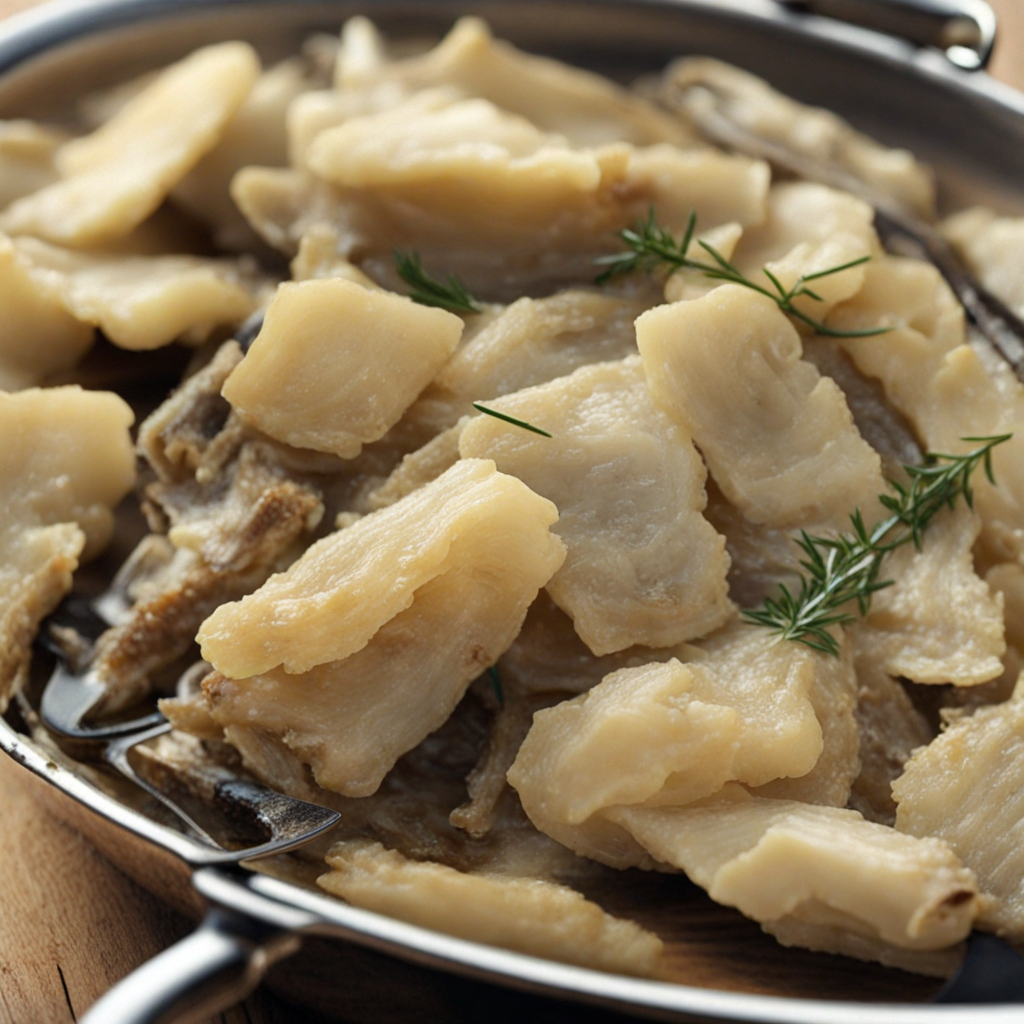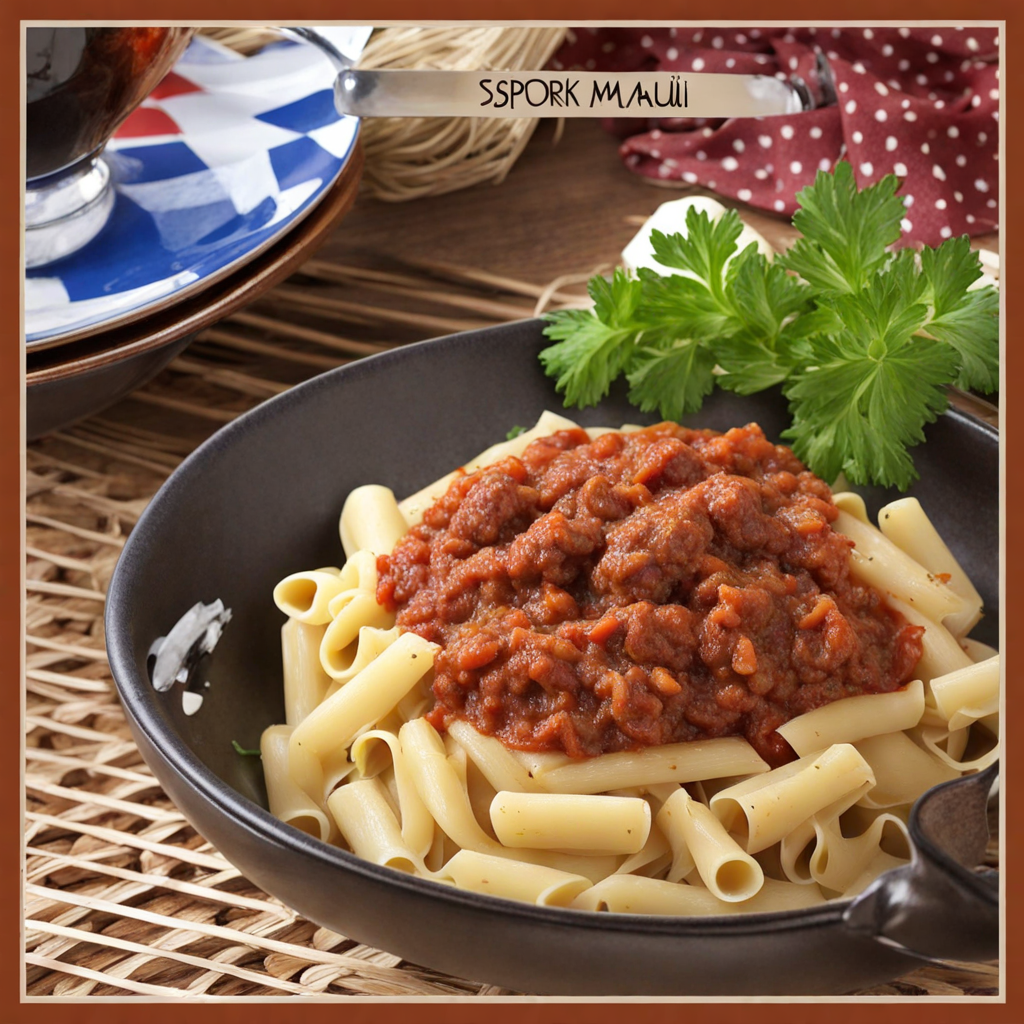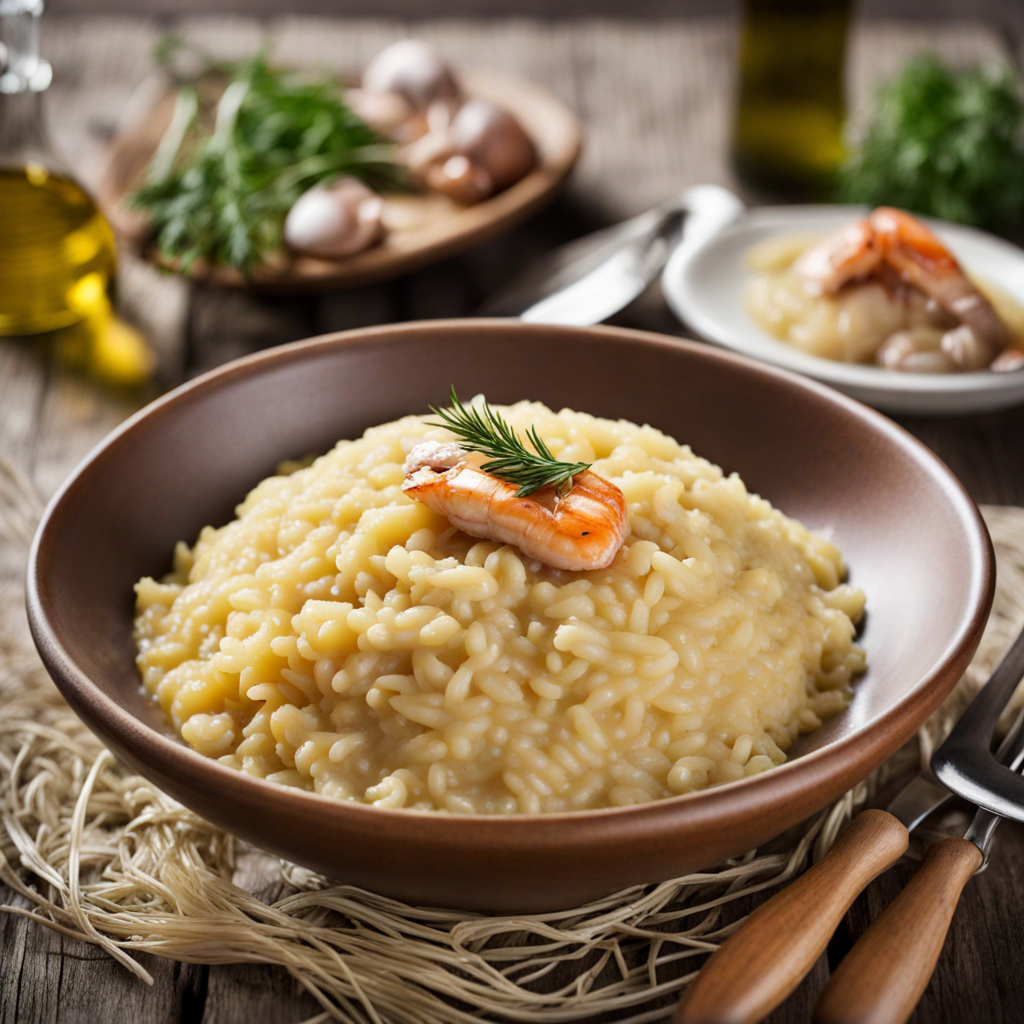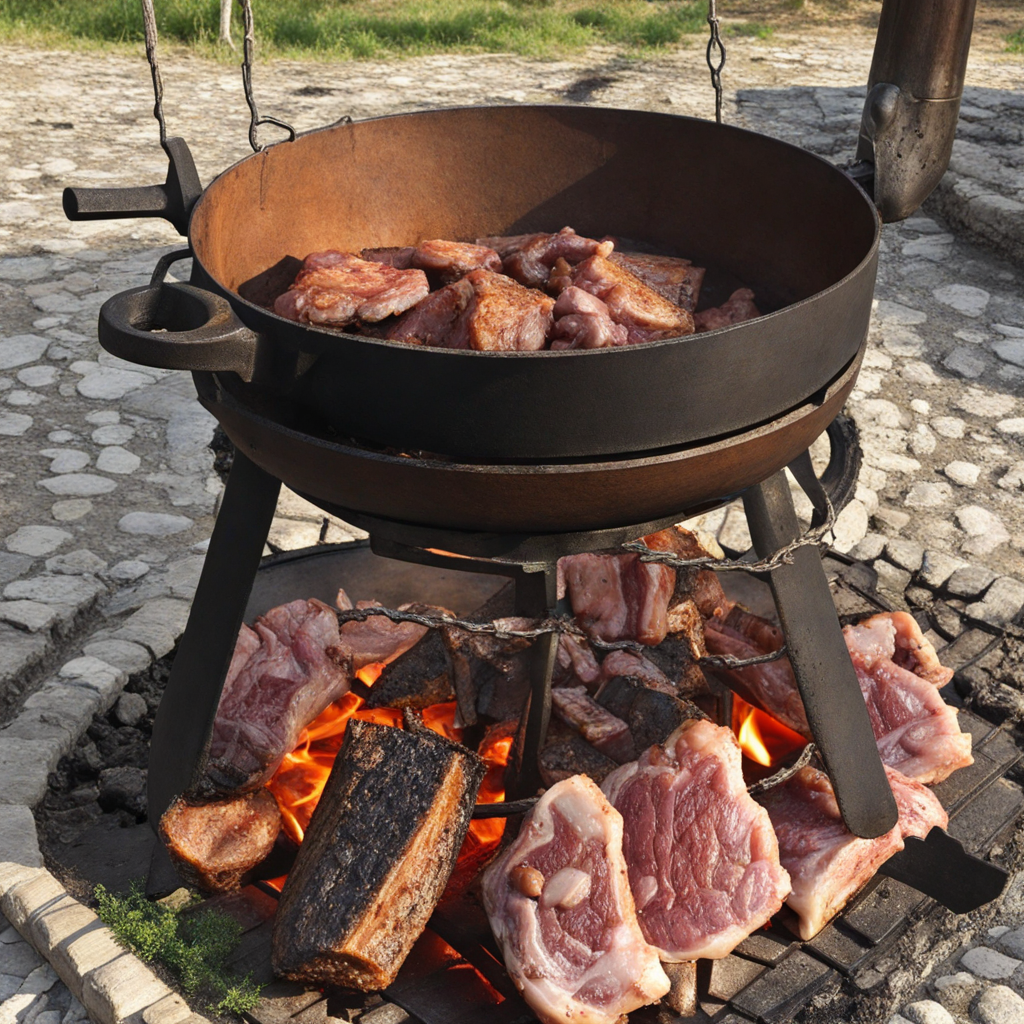Dalmatian Pršut
Dalmatian Pršut is a traditional Croatian dry-cured ham that originates from the picturesque Dalmatia region along the Adriatic coast. This delicacy is crafted through a meticulous process that includes salting the pork leg, followed by air-drying for several months. The unique climate of Dalmatia, characterized by warm winds and coastal breezes, plays a crucial role in developing the ham's distinct flavor and texture. The use of natural sea salt and the absence of artificial additives contribute to its pure, rich taste, making it a sought-after gourmet product. The flavor profile of Dalmatian Pršut is complex, combining savory and slightly sweet notes with a hint of smokiness. Each slice reveals a deep red color with delicate marbling, showcasing the quality of the meat. When enjoyed, the ham melts in your mouth, releasing a burst of umami that is both satisfying and addictive. It pairs beautifully with local cheeses, fresh bread, and olives, creating a delightful charcuterie experience that captures the essence of Mediterranean dining. Serving Dalmatian Pršut is often a celebration of simplicity and authenticity. It is traditionally enjoyed in thin slices, either as a standalone dish or as part of a larger spread. Whether savored on its own, wrapped around fresh figs, or incorporated into salads and pasta dishes, this cured ham beautifully showcases the rich culinary heritage of Croatia. Each bite transports you to the sun-kissed shores of Dalmatia, allowing you to experience the region's flavors and traditions in a truly memorable way.
How It Became This Dish
The History of Dalmatinski Pršut: A Culinary Treasure of Croatia Origin and Historical Context Dalmatinski pršut, or Dalmatian prosciutto, is a revered dry-cured ham originating from the Dalmatia region of Croatia. Its roots can be traced back to ancient times when the Mediterranean climate of Dalmatia, with its mild winters and warm summers, provided the ideal environment for the production of cured meats. The region's blend of Mediterranean herbs, sea breezes, and traditional methods have contributed to the unique flavor profile of this delicacy. Historical records suggest that the practice of curing meat in Dalmatia began during the time of the Roman Empire. The Romans were known for their extensive culinary practices, and the preservation of meat was crucial for sustaining their armies and populous territories. The techniques used for curing meats were passed down through generations, with local variations emerging based on the availability of resources and the specific cultural practices of each community. As the centuries progressed, the introduction of Christianity and the influence of monastic orders further shaped the culinary landscape of Dalmatia. Monasteries became centers for agricultural practices, including the raising of pigs, which were often fed on a diet of acorns and wild herbs—an essential factor in the development of the ham's distinct flavor. In this way, the tradition of making Dalmatinski pršut became intertwined with local agricultural practices and the rhythms of rural life. Cultural Significance Dalmatinski pršut is more than just a food item; it is a symbol of cultural identity and heritage in Croatia. The process of making pršut is deeply rooted in tradition and community. Families often come together to prepare this delicacy, with recipes and techniques passed down through generations. The production of Dalmatinski pršut is a communal activity that fosters social bonds, reflecting the importance of family and community in Croatian culture. The ham has become a celebrated component of Dalmatian cuisine, often served as part of a meze alongside local cheeses, olives, and wines. It is a staple at festive occasions, celebrations, and family gatherings, embodying the spirit of sharing and hospitality that is intrinsic to Croatian culture. Furthermore, Dalmatinski pršut has gained recognition beyond Croatia's borders, becoming a sought-after product among food connoisseurs and chefs worldwide. Development Over Time The production of Dalmatinski pršut has undergone significant evolution over the centuries while remaining true to its traditional roots. The methods of curing have been refined, yet the essence of the craft remains unchanged. Traditionally, the pork used for pršut is sourced from local breeds, such as the indigenous Black Slavonian pig, known for its quality and flavor. The best hams come from pigs that have been raised in the region, allowed to roam freely and forage for food, which contributes to the distinctive taste of the final product. The curing process begins with the selection of high-quality pork legs, which are salted and then left to rest. The salt draws out moisture, and the meat begins to cure. After several weeks, the hams are rinsed and coated with a mixture of spices, including black pepper, garlic, and rosemary, before being hung to air-dry in a cool, ventilated environment. This drying process can take anywhere from several months to over a year, depending on the desired flavor and texture. In 2010, Dalmatinski pršut received the designation of Protected Geographical Indication (PGI) from the European Union, which recognizes its unique qualities and traditional production methods. This status not only protects the authenticity of the product but also promotes its cultural significance and sustainability. The PGI designation ensures that only hams produced in specific areas of Dalmatia, following traditional methods, can be labeled as Dalmatinski pršut. The rise of culinary tourism in Croatia has further fueled interest in Dalmatinski pršut. As visitors flock to the picturesque coastal towns of Dalmatia, they are eager to experience the local cuisine, and pršut has become a highlight of gastronomic tours. Culinary festivals celebrating traditional foods, including Dalmatinski pršut, showcase the region's rich culinary heritage and attract both locals and tourists alike. Modern-Day Significance In contemporary times, Dalmatinski pršut continues to hold a prominent place in Croatian culture. Chefs and food enthusiasts are increasingly focused on the origins of their food, and the story of Dalmatinski pršut resonates with the growing movement toward sustainable and ethical food production. Many producers uphold traditional practices while also incorporating modern techniques, ensuring that the quality and flavor of the ham remain exceptional. The global interest in artisanal and locally sourced products has positioned Dalmatinski pršut as a gourmet item on international menus. Its versatility allows it to be paired with a variety of dishes, from simple antipasto platters to gourmet meals, further enhancing its appeal to a wider audience. Additionally, the ham is often featured in culinary competitions and showcases, elevating its status as a culinary icon. Moreover, the resurgence of interest in traditional foodways and practices has led to initiatives aimed at preserving the cultural heritage surrounding the production of Dalmatinski pršut. Various organizations and local communities are working together to ensure that the knowledge and skills required to produce this delicacy do not fade away. Workshops, educational programs, and collaborations with chefs are helping to keep the tradition alive and relevant to younger generations. Conclusion Dalmatinski pršut is a true reflection of Croatia's rich culinary heritage, encapsulating the history, culture, and traditions of the Dalmatia region. From its ancient origins to its status as a modern gastronomic treasure, this dry-cured ham embodies the spirit of community, sustainability, and authenticity. As we savor the unique flavors of Dalmatinski pršut, we also partake in a centuries-old tradition that continues to bring people together, fostering a deeper appreciation for the cultural significance of food. In the heart of Dalmatia, the legacy of pršut endures, inviting us all to share in its delicious history.
You may like
Discover local flavors from Croatia


